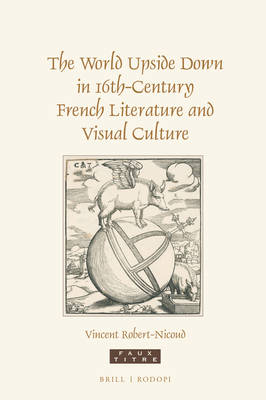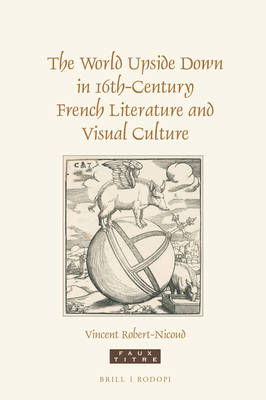
- Afhalen na 1 uur in een winkel met voorraad
- Gratis thuislevering in België vanaf € 30
- Ruim aanbod met 7 miljoen producten
- Afhalen na 1 uur in een winkel met voorraad
- Gratis thuislevering in België vanaf € 30
- Ruim aanbod met 7 miljoen producten
Zoeken
The World Upside Down in 16th-Century French Literature and Visual Culture
Vincent Robert-Nicoud
€ 222,95
+ 445 punten
Omschrijving
In The World Upside Down in 16th Century French Literature and Visual Culture Vincent Robert-Nicoud offers an interdisciplinary account of the topos of the world upside down in early modern France. To call something 'topsy-turvy' in the sixteenth century is to label it as abnormal. The topos of the world upside down evokes a world in which everything is inside-out and out of bounds: fish live in trees, children rule over their parents, and rivers flow back to their source. The world upside down proves to be key in understanding how the social, political, and religious turmoil of sixteenth-century France was represented and conceptualised, and allows us to explore the dark side of the Renaissance by unpacking one of its most prevalent metaphors.
Specificaties
Betrokkenen
- Auteur(s):
- Uitgeverij:
Inhoud
- Aantal bladzijden:
- 298
- Taal:
- Engels
- Reeks:
- Reeksnummer:
- nr. 426
Eigenschappen
- Productcode (EAN):
- 9789004381834
- Verschijningsdatum:
- 20/09/2018
- Uitvoering:
- Hardcover
- Formaat:
- Genaaid
- Afmetingen:
- 160 mm x 236 mm
- Gewicht:
- 557 g

Alleen bij Standaard Boekhandel
+ 445 punten op je klantenkaart van Standaard Boekhandel
Beoordelingen
We publiceren alleen reviews die voldoen aan de voorwaarden voor reviews. Bekijk onze voorwaarden voor reviews.











